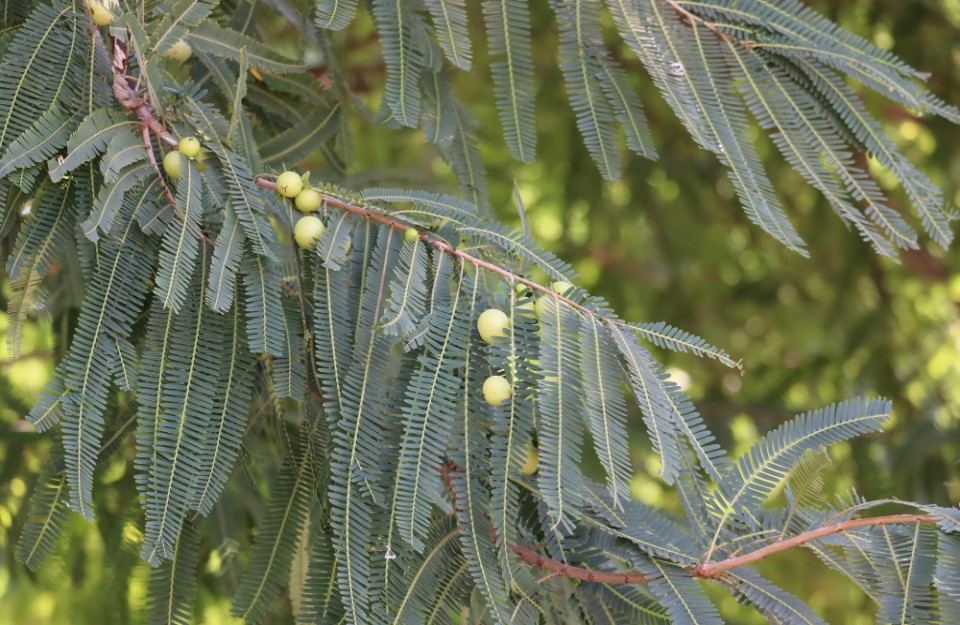
The Indian Amla, known as Amla, is an ancient fruit with remarkable nutritional and medicinal properties. Amla cultivation is widespread throughout India, thriving particularly well in arid and non-arable regions. Its benefits are extolled in various scriptures such as the Ramayana, Kadambri, Charak Samhita, Sushrut Samhita, and others, underscoring its significant medicinal and spiritual value. Regular consumption of Amla contributes to overall health, and its fruits are integral to the preparation of Triphala churna and Chyawanprash, among other Ayurvedic medicines. Worshiping the Amla tree and partaking of food under its shade are considered auspicious, particularly during the month of Kartik.
Amla is abundant in Vitamin C, offering benefits for skin, teeth, gums, bones, eyes, and digestive disorders. Uttar Pradesh, Rajasthan, Madhya Pradesh, Haryana, Gujarat, Maharashtra, and Tamil Nadu exhibit substantial potential for Amla cultivation. Amla fruits are utilized in making pickles, preserves, chutneys, hair oil, shampoo, and various Ayurvedic medicines on a commercial scale.
Before introducing Amla trees to your garden, it's recommended to establish windbreak rows on all sides. This can be achieved by planting one or two rows of trees such as sisam, neem, or ardu in a linear formation. These rows serve to shield the plants from strong, hot summer winds and mitigate damage during winter months. When preparing to plant saplings in the garden, mark out spots at intervals of 8x8 meters. Prior to the rainy season (May-June), dig pits measuring 1x1 meter and fill them with a blend of topsoil and compost in equal proportions. After filling, water the pits and ensure the sapling is positioned 10 cm above ground level. Planting saplings is ideally done from July to August, although it can also be undertaken from February to October.
For sowing seeds, create ridges 15-20 cm high and 3x1 meter long on the ground surface. Sow seeds between July and August, and after one month, transplant the germinated seedlings into the ridges at intervals of 20x20 cm. Alternatively, prepare polythene pipes filled with a mixture of compost, fine soil, and sand at a ratio of 30x12 cm to sow seeds between February and March. Typically, these seeds germinate within 5-7 days. Grafting is another viable method for propagating Amla trees. Pruning can be carried out between July and September.
Amla cultivation thrives in warm and arid climates. Amla can be cultivated with ease in locations up to 1800 meters above sea level. Since the plants shed their leaves during the cold season, cultivation in areas lacking irrigation facilities is not advisable. However, with proper drainage and deep loamy soil, cultivation remains feasible. Even barren and rocky soil can sustain Amla growth, although lime-rich soil is unsuitable.
During the initial month after planting Amla saplings, irrigation should be conducted at intervals of 3-4 days. Given that Amla bloom during March-April in the spring season, they require increased water for fruit development. In sandy soil, irrigation should be carried out every 10-15 days from March to July. In the absence of rainfall, irrigation should be performed 2-3 times. During winter or in orchards with established Amla plants, one or two irrigations are necessary.
It is imperative to loosen and cultivate around the base of the plants. This action aids in breaking the hard crust of the soil surface, facilitating better plant growth. Additionally, covering plant rows with black polyethylene film or suppressing unwanted grass and weeds helps reduce moisture evaporation.
For Amla cultivation, the quantity of fertilizers and manure is determined only after soil testing. Typically, each tree should be given 10 kg of compost, 200 grams of urea, 125 grams of diammonium phosphate, and 125 grams of muriate of potash. In case of signs of zinc deficiency, 250-500 grams of zinc sulfate should be applied per plant. Fertilizers and manure are typically applied in Amla orchards during January-February and June-July.
Varieties of Amla:
Read More... Tulsi Cultivation and its benefits, Know Complete information
Diseases and Management:
Pruning and Yield: With proper care and nutrition, the plant starts yielding abundant produce within five years. Growth accelerates from March-April to the rainy season, and the fruits become ready for harvesting from November-December. A fully developed tree of 10-12 years yields approximately 150-200 kg of produce.